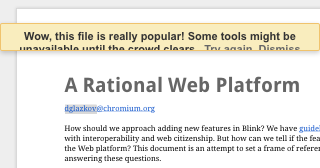@t excellent minimal Like implementation! Whilst your homepage performance is admirable, I don’t think you can meaningfully compare it to silo infinite scroll untill there’s some sort of pagination :) Currently, without rel-prev[ious] links, there’s no way for crawlers (e.g. readers like Shrewdness, semi-hypothetical “your year in indieweb”) tools to find your old posts other than fetching each one individually, which for many cases takes too long to provide a good experience — e.g. crawling your years worth of content takes ≈162s, verifiable with the following bash+PHP code:
curl -Ss https://getcomposer.org/installer | php
./composer.phar require taproot/subscriptions
php -a # Start an interactive shell, paste in following code (alternatively save into file):
@(require 'vendor/autoload.php'); $start = microtime(1); echo "Starting crawl…\n"; Taproot\Subscriptions\crawl('http://tantek.com/2014/365/t1/indieweb-like-posts-2015-commitment-done', function ($r) { echo "."; if (substr($r['mf2']['items'][0]['properties']['published'][0], 0, 4) == '2013') { return false; } else { return true; } }); $total = microtime(1) - $start; echo "\nYear crawl for 2014 took {$total}s";
 Tantek Çelik
Tantek Çelik Micah N Gorrell
Micah N Gorrell Joschi Kuphal 吉
Joschi Kuphal 吉




 Emil Björklund
Emil Björklund